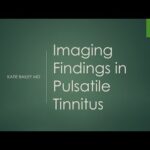Turbulence as a mechanism of pulsatile tinnitus revealed by high-fidelity CFD (Pre-stent viz. 1/2)
Join the thousands who have used this dietary supplement to help fight tinnitus, and the constant ringing in ears, improve ear and auditory health, improve sleep and enhance overall brain and mental health, and finally learn how to stop tinnitus once and for all by click here: https://ift.tt/w2B8neE
Pulsatile tinnitus (PT) is a debilitating condition that can be caused by a vascular abnormality, such as an arterial or venous lesion. Although treatment of PT-related venous lesions has been shown to successfully cure patients of the associated ‘tormenting’ rhythmical sound, much controversy still exists regarding their role in the etiology of PT. A patient presented with a history of worsening, unilateral PT. A partial venous sinus obstruction related to the large arachnoid granulation was detected on the right side, and subsequently stented at the right transverse sinus. High-fidelity computational fluid dynamics (CFD) was performed on a 3D model digitally segmented from the pre-stent venogram, with assumed pulsatile flow rates. A post-stent CFD model was also constructed from this. Data-driven sonification was performed on the CFD velocity data, blinded to the patient’s self-reported sounds. The patient reported that the PT was completely resolved after stenting, and has had no recurrence of the symptoms after more than 2 years. CFD simulation revealed highly disturbed, turbulent-like flow at the sigmoid sinus close to auditory structures, producing a sonified audio signal that reproduced the subjective sonance of the patient’s PT. No turbulence or sounds were evident at the stenosis, or anywhere in the post-stent model. For the first time, turbulence generated distal to a venous stenosis is shown to be a cause of PT. High-fidelity CFD may be useful for identifying patients with such ‘torrents’ of flow, to help guide treatment decision-making.
Link to the original paper:
Pereira VM, Cancelliere NM, Najafi M, et al Torrents of torment: turbulence as a mechanism of pulsatile tinnitus secondary to venous stenosis revealed by high-fidelity computational fluid dynamics Journal of NeuroInterventional Surgery Published Online First: 20 November 2020. doi: 10.1136/neurintsurg-2020-016636
https://ift.tt/nJk0M5S
#pulsatiletinitus
#tinnituscauses
tinnitusrelief
#earringing
The post Turbulence as a mechanism of pulsatile tinnitus revealed by high-fidelity CFD (Pre-stent viz. 1/2) appeared first on Pulsatile Tinnitus Treatments News - Tinnitus Relief.
https://ift.tt/1OnhVaR
#tinnitus #pusatiletinnitus #earringing #whatistinnitus #howtostoptinnitus



Comments
Post a Comment